10 Tips For Spotting Elk And Wildlife In Estes Park
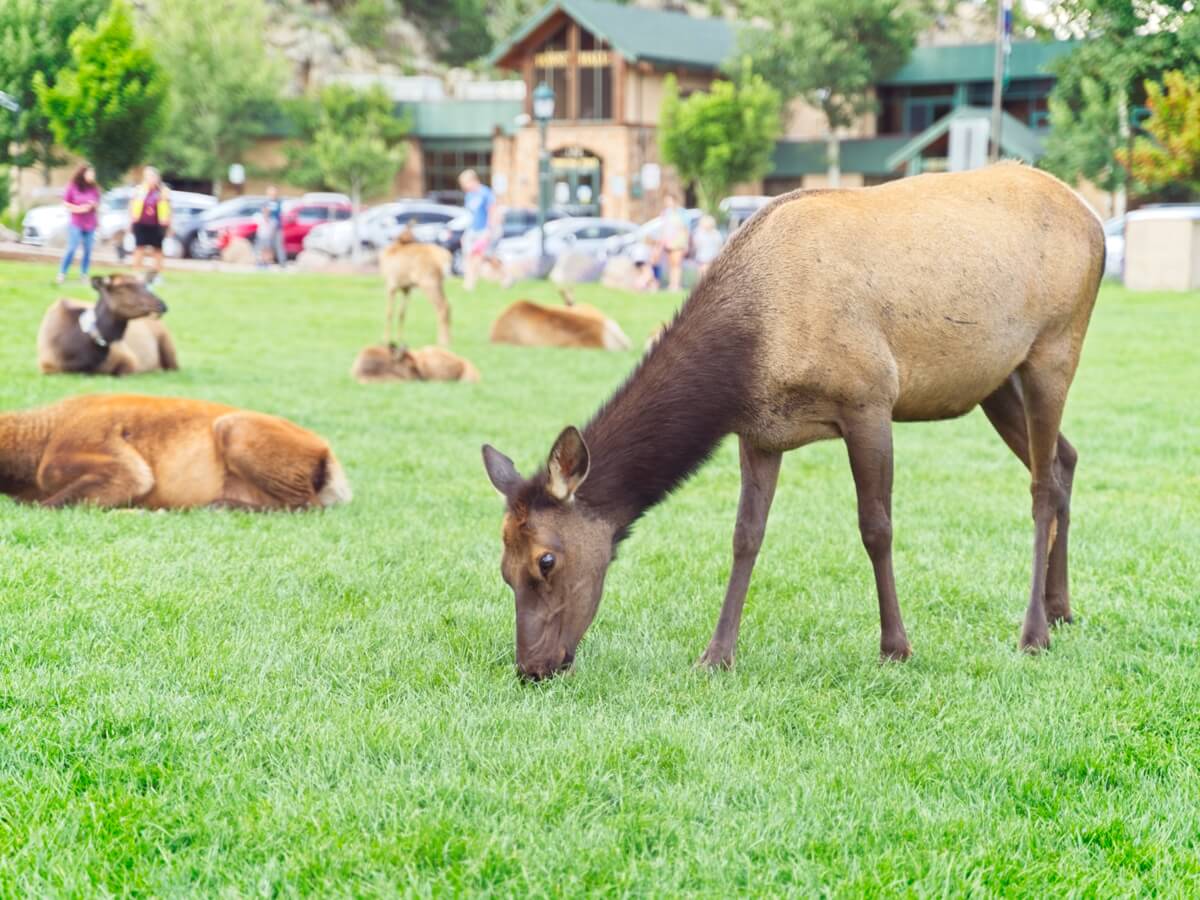
When Are Elk In Estes Park?
Elk are in Estes Park all year with September and October being the best times to see them. Early fall marks their mating season where male elk (bulls) are very active and vocal, making it an exciting time for wildlife watching.
From my experience, the fall also allows you to see herds of elk move through Estes Park sometimes numbering in the hundreds.
Here is what to expect during every season:
Spring (April to June): Elk are more commonly seen in the lower meadows, as they move to higher elevations for the summer. This is a good time to see young calves.
Summer (July to August): They are mostly in the higher elevations within Rocky Mountain National Park, which can make them harder to spot.
Fall (September to November): As mentioned earlier, this is the most popular time to see elk in Estes Park, especially during the rutting season (usually mid-September to mid-October).
Winter (December to March): Elk tend to move to lower elevations and can often be seen in the town of Estes Park itself, as well as in the valleys and meadows of the national park.
During my 14 years living in Colorado and over 80 trips taken to Estes, I always spot some sort of wild animal walking through.
Although seeing elk and other wildlife is never guaranteed, following a few of my tips will help you see wildlife in a fun and unique way.
1. Stop At The Estes Park Sign For Wildlife
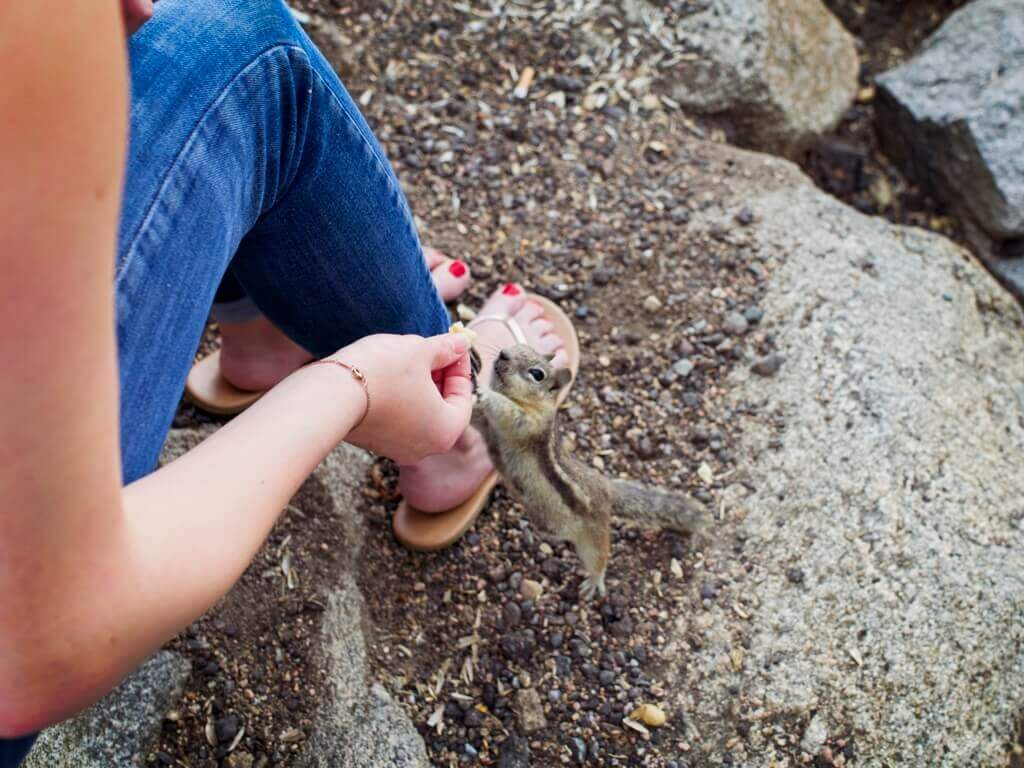
A tradition for locals and tourists alike is seeing the chipmunks around the rock mounds close to the Estes Park sign in HWY 36.
Although usually a highlight for kids, my wife and I always like starting our time in Estes by saying hello to these little guys.
I usually find them most active during the day and they are hiding in their burrows around dusk.
Even here, I’ve spotted deer and even wild turkeys checking out the excitement.
2. Head To the Center Of Estes Park First For Elk
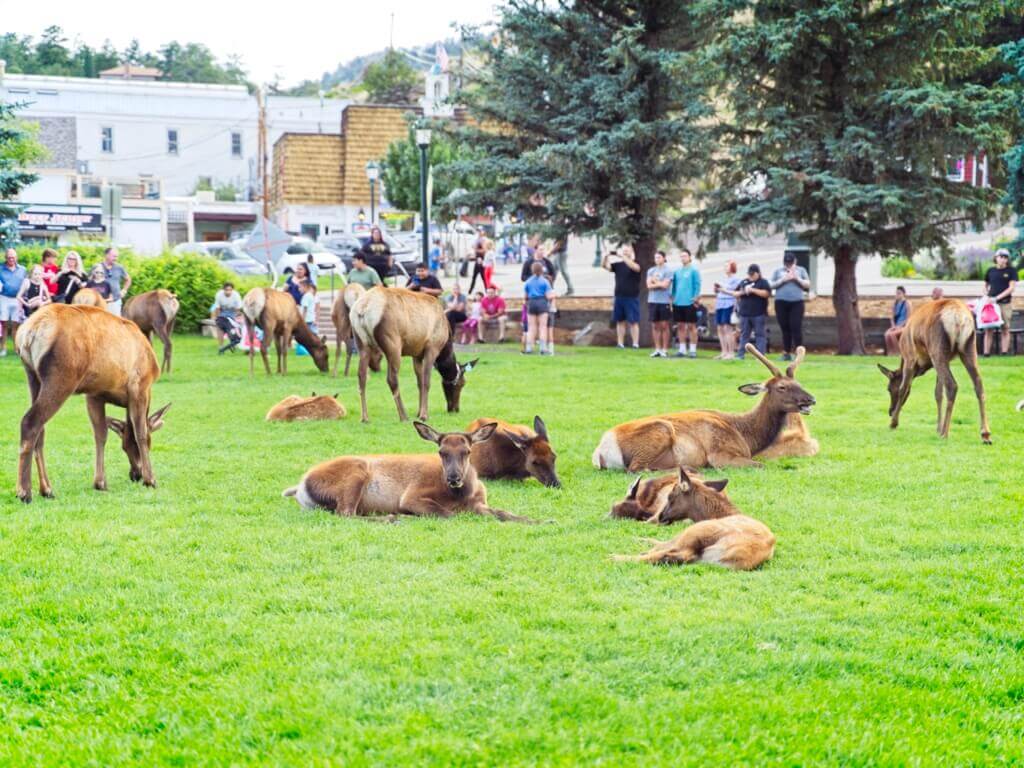
If you want to see live elk hanging around Estes, I suggest heading to the center of town around Bond Park, or the golf course and parks around Lake Estes.
You can easily drive around both to see if there are any in view before parking and exploring the town.
When I first enter Estes, this is usually the first place I see them. They will either be walking along the road, grazing, or resting on a flat patch of grass. These sitings are a very popular reason to visit Estes, so if you see a large crowd, this is why.
3. Follow A Few Safety Guidelines
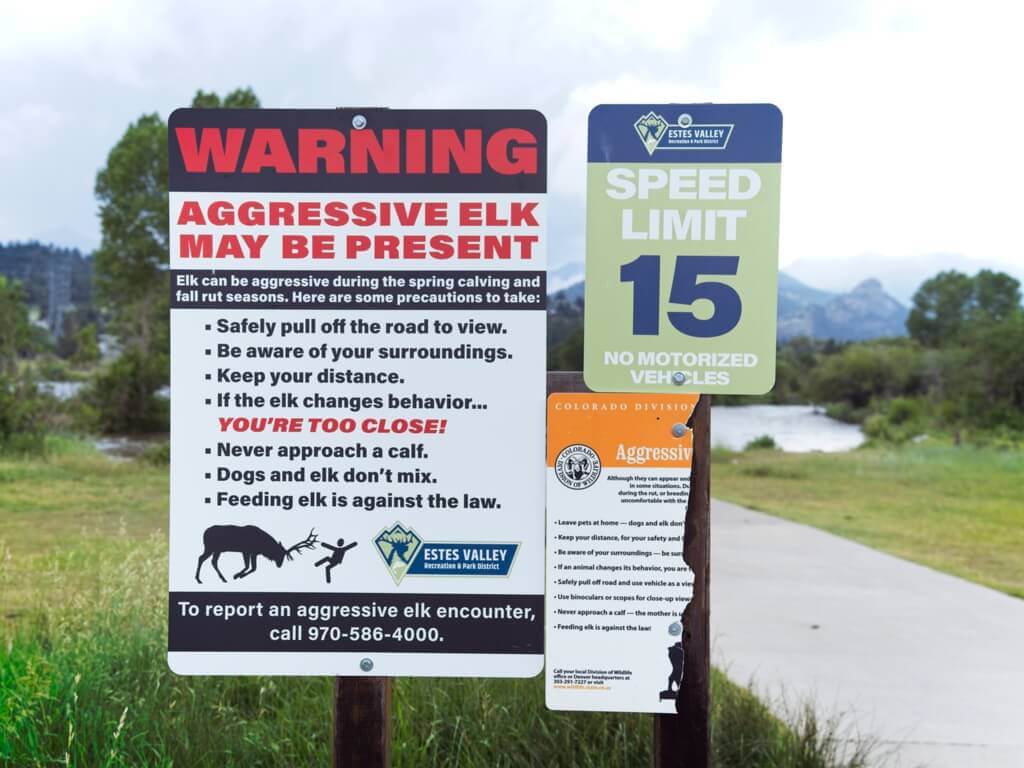
No matter what wildlife you encounter in Estes Park, follow these guidelines to ensure the safety of you and the animals.
Maintain A Safe Distance: Always keep a safe distance from wildlife. If the elk looks jumpy or nervous by your presence, you are too close.
Do Not Feed Wildlife: Feeding animals can harm their health, alter natural behaviors, and expose animals and humans to danger. Don’t be tempted to feed any of your leftovers from a great dinner in Estes Park to a cute squirrel.
Stay On Designated Trails: For your safety and to protect wildlife habitats, stick to marked trails and areas while hiking. Venturing off-trail can damage the ecosystem, and it can also increase your risk of unexpected encounters.
Keep Pets Leashed: If you are traveling with your dog in Estes Park, keep them leashed and under control at all times. Pets can chase, disturb, and even harm wildlife, and they can also be injured by other animals.
4. Visit During The Fall If Possible
Fall is the best time to view the elk in Estes Park due to the mating (rut) season with large herds of elk moving through the town at any given time.
Bull elk (males) engage in their dramatic mating rituals, providing a rare opportunity to hear the powerful bugling of the bulls, a sound that resonates through the valley.
Plus, if you love photography, the backdrop of fall creates a picturesque setting perfect for capturing memorable wildlife photos.
5. Go On A Hike
I have seen countless deer, elk, and even moose while on hikes in and around Estes Park. With fewer people in a more secluded setting, animals will often wander around trails, giving you the perfect opportunity to witness them in their natural habitat.
One of my favorite trails where I’ve seen a huge bull moose is Lily Lake just a short drive from downtown.
6. Drive through Rocky Mountain National Park
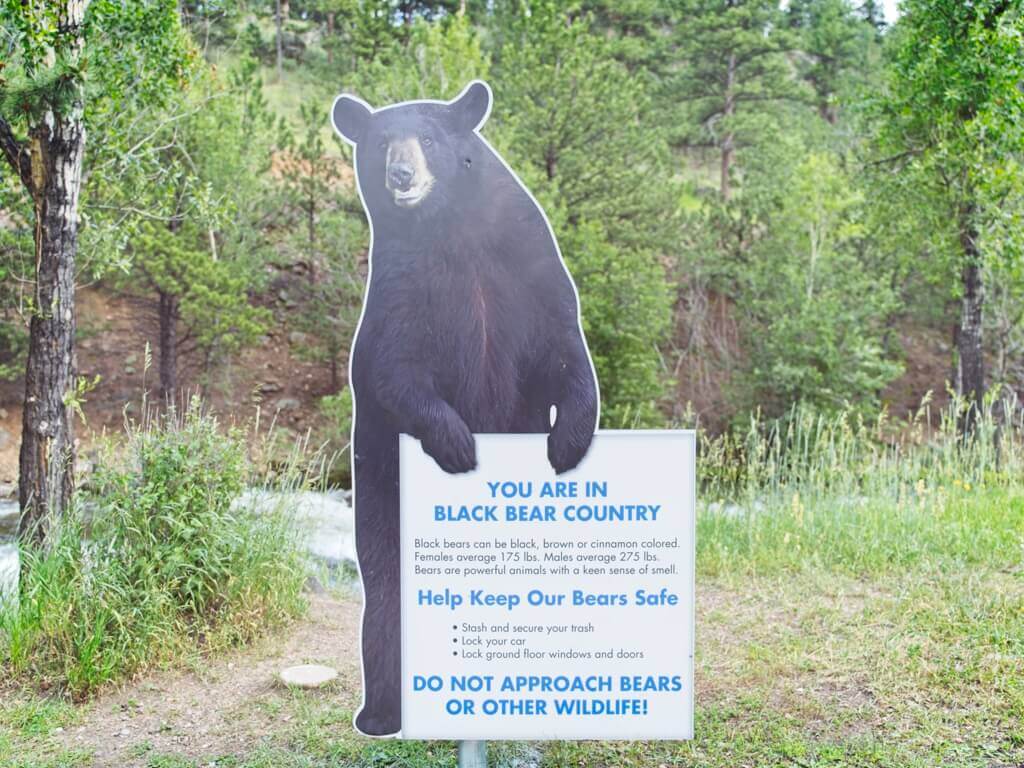
Of course, you must visit the famous Rocky Mountain National Park and experience the mountains in a personal way. Especially in the summer when the elk roam at higher elevations, you will find them grazing along the alpine tundra or walking along the road.
Be careful if you drive in RMNP at night. Plenty of elk can be found walking right in front of your car, an experience I’ve had too many times, but luckily, with no accidents.
In case there is any confusion, there is a fee to enter RMNP, but visiting Estes Park is completely free.
7. Stay In A Cabin
Staying in a cabin or accommodations located on the outskirts of town is typically closer to the natural habitats of various wildlife species.
Being in or near these areas increases the likelihood of encountering animals like elk, deer, and various bird species, as they are more abundant and active in less urbanized zones.
Wildlife viewing from your window or enjoying the morning coffee on the patio will help your chances of spotting something new.
8. Visit Around Dawn Or Dusk
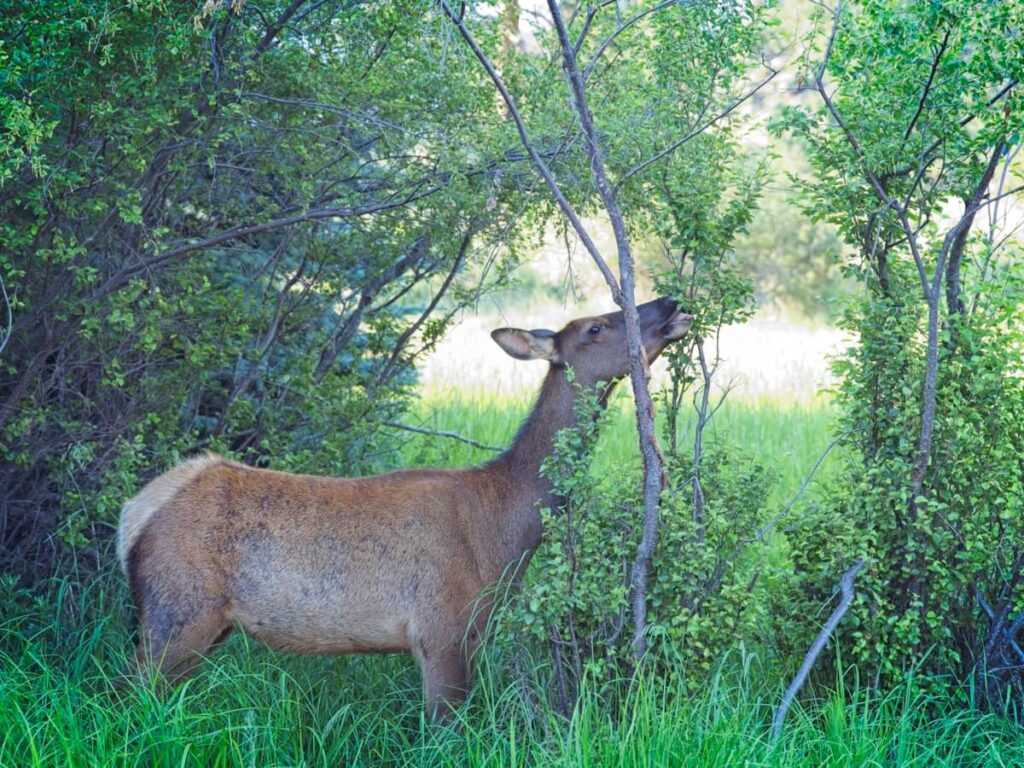
The best time to see wildlife in Estes Park is usually at sunrise or sunset. Many animals, including elk, are crepuscular, meaning they are most active during the twilight hours of dusk and dawn. This is when they typically forage for food and are more likely to be seen in open areas.
The cooler temperatures of early morning and late evening also make these times more comfortable for the animals to be active.
For the best photos, these are the perfect lighting conditions to capture those unforgettable moments.
9. Use Binoculars or Zoom Lenses
If wildlife really interests you, then investing in a pair of binoculars or a zoom lens for your camera will make a huge difference in your experience.
Sometimes the elk are too far away, and getting closer is out of the question due to the terrain or boundaries. Plus, it’s always a good idea to maintain a safe distance as wild animals can be unpredictable or territorial.
I watched a parent allow their young child to walk up to a wild elk lying on the grass trying to take a perfect picture. The elk stood up and almost kicked the kid! Luckily, the parents got there just in time.
This sort of behavior causes accidents, and I understand the need for the perfect picture, but just buy the zoom lens.
10. Stop At The Estes Park Visitor Center
If it’s your first time in Estes Park, I think a quick stop at the Visitors Center is the easiest way to plan your visit. Here, you can gather information on elk and questions about the recent wildlife movement sightings.
If no one knows any information there, you can try looking for a park ranger around the city or ask a few locals running the shops.
Locals and park rangers possess extensive knowledge about the behavior and patterns of wildlife in the area. They can provide valuable insights into the best places to see elk and other wildlife species.
Elk In Estes Park Are Waiting For You
I always recommend travelers in Colorado to visit Estes Park. You have the opportunity to see wildlife in a way that is rarely experienced elsewhere in the country. From hearing elk bugling in Estes Park, to seeing Bighorn Sheep traversing the terrain in Rocky Mountain National Park, these animals are easy to spot, especially when following this guide.
Chris Kretzer has traveled the world visiting over 35 countries and eating his way through every city. With his wife Tiarra, they explore different food cultures and create food guides, podcasts, and travel articles helping everyone experience the world through food.
